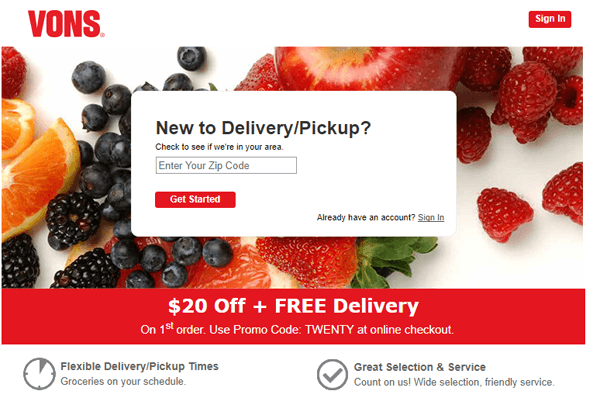To Control their Destiny, Retail Brands Must Control their Data

by Bob Gaito
16 Jan, 2023
If the future is selling direct, brands should think carefully about whether or not they will own the direct-to-consumer relationship.
Sears just announced it will sell Kenmore appliances on Amazon, sending stocks tumbling for its appliance-selling competitors. Just this summer, Nike also announced it would sell its iconic footwear through the online behemoth. Both made front page news. What, however, does it really mean to sell on Amazon? Does it mean you're developing a direct-to-consumer relationship? Not really. Some would even say it's sabotaging the direct consumer relationships you already have.
Before jumping in head first, brands need to think carefully about what a direct-to-consumer relationship means and its associated benefits. This is particularly important in consumer packaged goods, where CPG brands are experiencing increased pressure to sell directly with no traditional foothold in doing so.
CPGs are big business-valued at more than $2 trillion and dominated by big names like Proctor & Gamble and Kraft Heinz. For the most part, CPGs don't sell directly to consumers. They sell to retailers like Kroger, who then sell to consumers. CPGs have little experience with the direct consumer relationship because they historically have had little access to the people who buy and use their products. It's the retailers who gather this insight, and until now, this hasn't been a problem. Retail, however, is changing.
Ecommerce's market share in grocery is still minimal, but it will continue to grow and shift the industry in drastic ways.

( Image source.)
Physical grocery stores probably won't go the way of the dinosaur, but it's clear that momentum is shifting away from them toward online retail. This threatens CPGs' main distribution channel through brick-and-mortar stores. Beyond this, in-store sales are squeezed by an increasing share of store brand purchases (think of buying Trader Joe's ketchup instead of Heinz). Widespread reaction to Amazon's purchase of Whole Foods and its popular 365 store brand led to a stock sell-off of big name-brand companies including Kraft Heinz, Campbell Soup, ConAgra, Kellogg, Hormel, Tyson, Hershey, General Mills, Post and even smaller packaged goods companies.
 "Widespread reaction to Amazon's purchase of Whole Foods and its popular 365 store brand led to a stock sell-off of big name-brand companies..."
"Widespread reaction to Amazon's purchase of Whole Foods and its popular 365 store brand led to a stock sell-off of big name-brand companies..."
" Bob Gaito, 4Cite
And now there's a new threat in the form of start-up online retailers like Brandless, which sell their own line of consumer packaged goods straight to consumers. Stripping away what they call the "brand tax" (i.e., costs related to the traditional distribution model), they offer goods for about 40 percent less than comparable products.

( Image source.)
CPGs have also suffered some hard blows from upstart online subscription services like Dollar Shave Club, which upended the dominance of P&G's Gillette razors.
An easy way for CPGs to sell online is through Amazon, which eliminates the need for developing their own ecommerce platforms and delivery systems. By taking this route, they're still going through a retailer - and still missing out on owning the direct consumer relationship and its associated data.
If there's one thing that's become increasingly clear in the changing world of retail, it's that customer data is gold. With Amazon acting as your hub of demand generation, fulfillment and contact with the consumer, they will be the ones collecting data and insights about your customers. They will use this data to sell your products on your behalf, but they'll also likely use it to sell competitor products to your customers.
 "If there's one thing that's become increasingly clear in the changing world of retail, it's that customer data is gold."
"If there's one thing that's become increasingly clear in the changing world of retail, it's that customer data is gold."
" Bob Gaito, 4Cite
Brands that own the direct consumer relationship can collect this data themselves and use it to get ahead of the competition by focusing not only on what their customers buy, but how they buy. Market trends predict that CPGs with the most direct relationships with the end customer will ultimately be the most successful. This requires investment though, so brands should carefully consider the tradeoffs to determine if controlling their own data is something they want to invest in for the future.
Interaction through social media is one of the most visible ways for CPGs to promote their brand and develop direct contact with consumers. Fortunately, new distribution channels like Facebook, Twitter, Instagram and YouTube are making it easy to build audiences and find customers. Many CPGs are already using social media to develop customer relationships, but the key is to funnel them into greater levels of engagement. The best way to do this is through direct-to-consumer marketing.
With the right technology and processes in place, a consumer who shows interest in your brand can automatically receive highly targeted, personalized, contextual messaging that moves them along the customer journey toward purchase and keeps them as loyal customers. Essential to making this happen are "intelligent" websites and mobile platforms that capture visitor data and react to customer interactions in real-time. Selling online isn't just about taking orders through a website. Companies that succeed must build - or retain vendors that have already built - real-time interaction management technology and tools that are highly focused on navigating the ever-shifting terrain of ecommerce.
Real time interaction management (RTIM) lets you deliver right-time, right-place contextual messaging tailored to each customer's specific interests. Fundamental to RTIM is identifying customers online and tracking their shopping and browsing activities on your website, simultaneously integrating this data with what you already know about them. This enables personalized direct marketing through instantaneous website messaging, automated email and even post cards to their home address, all of which can be dynamically populated with customer-specific product recommendations and offers.
Over time, this data becomes more and more valuable and can serve as the linchpin of your customer relationship management.
So, ask yourself, who do you want to own it?
 About the Author
About the Author
Bob Gaito is CEO of 4Cite, a consumer identification/data insights company that uses Web visitor identification technology, data and analytics to identify previously unidentifiable customers and influence purchasing activity.
Sears just announced it will sell Kenmore appliances on Amazon, sending stocks tumbling for its appliance-selling competitors. Just this summer, Nike also announced it would sell its iconic footwear through the online behemoth. Both made front page news. What, however, does it really mean to sell on Amazon? Does it mean you're developing a direct-to-consumer relationship? Not really. Some would even say it's sabotaging the direct consumer relationships you already have.
Before jumping in head first, brands need to think carefully about what a direct-to-consumer relationship means and its associated benefits. This is particularly important in consumer packaged goods, where CPG brands are experiencing increased pressure to sell directly with no traditional foothold in doing so.
CPGs are big business-valued at more than $2 trillion and dominated by big names like Proctor & Gamble and Kraft Heinz. For the most part, CPGs don't sell directly to consumers. They sell to retailers like Kroger, who then sell to consumers. CPGs have little experience with the direct consumer relationship because they historically have had little access to the people who buy and use their products. It's the retailers who gather this insight, and until now, this hasn't been a problem. Retail, however, is changing.
Ecommerce's market share in grocery is still minimal, but it will continue to grow and shift the industry in drastic ways.

( Image source.)
Physical grocery stores probably won't go the way of the dinosaur, but it's clear that momentum is shifting away from them toward online retail. This threatens CPGs' main distribution channel through brick-and-mortar stores. Beyond this, in-store sales are squeezed by an increasing share of store brand purchases (think of buying Trader Joe's ketchup instead of Heinz). Widespread reaction to Amazon's purchase of Whole Foods and its popular 365 store brand led to a stock sell-off of big name-brand companies including Kraft Heinz, Campbell Soup, ConAgra, Kellogg, Hormel, Tyson, Hershey, General Mills, Post and even smaller packaged goods companies.
 "Widespread reaction to Amazon's purchase of Whole Foods and its popular 365 store brand led to a stock sell-off of big name-brand companies..."
"Widespread reaction to Amazon's purchase of Whole Foods and its popular 365 store brand led to a stock sell-off of big name-brand companies..."" Bob Gaito, 4Cite
And now there's a new threat in the form of start-up online retailers like Brandless, which sell their own line of consumer packaged goods straight to consumers. Stripping away what they call the "brand tax" (i.e., costs related to the traditional distribution model), they offer goods for about 40 percent less than comparable products.

( Image source.)
CPGs have also suffered some hard blows from upstart online subscription services like Dollar Shave Club, which upended the dominance of P&G's Gillette razors.
An easy way for CPGs to sell online is through Amazon, which eliminates the need for developing their own ecommerce platforms and delivery systems. By taking this route, they're still going through a retailer - and still missing out on owning the direct consumer relationship and its associated data.
If there's one thing that's become increasingly clear in the changing world of retail, it's that customer data is gold. With Amazon acting as your hub of demand generation, fulfillment and contact with the consumer, they will be the ones collecting data and insights about your customers. They will use this data to sell your products on your behalf, but they'll also likely use it to sell competitor products to your customers.
 "If there's one thing that's become increasingly clear in the changing world of retail, it's that customer data is gold."
"If there's one thing that's become increasingly clear in the changing world of retail, it's that customer data is gold."
" Bob Gaito, 4Cite
Brands that own the direct consumer relationship can collect this data themselves and use it to get ahead of the competition by focusing not only on what their customers buy, but how they buy. Market trends predict that CPGs with the most direct relationships with the end customer will ultimately be the most successful. This requires investment though, so brands should carefully consider the tradeoffs to determine if controlling their own data is something they want to invest in for the future.
Interaction through social media is one of the most visible ways for CPGs to promote their brand and develop direct contact with consumers. Fortunately, new distribution channels like Facebook, Twitter, Instagram and YouTube are making it easy to build audiences and find customers. Many CPGs are already using social media to develop customer relationships, but the key is to funnel them into greater levels of engagement. The best way to do this is through direct-to-consumer marketing.
With the right technology and processes in place, a consumer who shows interest in your brand can automatically receive highly targeted, personalized, contextual messaging that moves them along the customer journey toward purchase and keeps them as loyal customers. Essential to making this happen are "intelligent" websites and mobile platforms that capture visitor data and react to customer interactions in real-time. Selling online isn't just about taking orders through a website. Companies that succeed must build - or retain vendors that have already built - real-time interaction management technology and tools that are highly focused on navigating the ever-shifting terrain of ecommerce.
Real time interaction management (RTIM) lets you deliver right-time, right-place contextual messaging tailored to each customer's specific interests. Fundamental to RTIM is identifying customers online and tracking their shopping and browsing activities on your website, simultaneously integrating this data with what you already know about them. This enables personalized direct marketing through instantaneous website messaging, automated email and even post cards to their home address, all of which can be dynamically populated with customer-specific product recommendations and offers.
Over time, this data becomes more and more valuable and can serve as the linchpin of your customer relationship management.
So, ask yourself, who do you want to own it?
 About the Author
About the Author
Bob Gaito is CEO of 4Cite, a consumer identification/data insights company that uses Web visitor identification technology, data and analytics to identify previously unidentifiable customers and influence purchasing activity.







